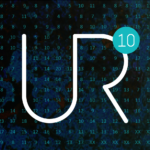
The development impact of risk analytics
February 14, 2020 12:07 am Leave a comment
The development impact of risk analytics
identify · risk assessment · risk finance · decision-making
In order to manage and finance risk you have to quantify it. Intuitively it makes sense that risk understanding improves decisions, and that it should be as close as possible to the local risk owner, combining the best of local and global knowledge. However, countries investing in risk prevention and residual risk transfer programs do not always have the insight they need to inform policy or execute transactions. So much of the world’s modelling capability and resource is locked up in the global north and there is a case for building capacity where it is most needed.
This workshop will explore the mechanisms through which risk insight catalyses positive SDG outcomes (see relevant SDG targets specified below.) A cross-sector group drawn from the private sector, humanitarian and development organisations will propose a theory of change supported by real world evidence. It will suggest that the best way to achieve the contagious spread of risk understanding (and the empowerment it brings) is through public-private collaboration and the principles of genuinely open risk modelling.
The session offers a chance to consult and involve users and providers of risk information, and to test the conclusions of our research so far. It will be designed to be entertaining, informative, and most of all interactive. Participants will discuss: How risk insight works in practice. What risk analytics approaches work for different decision needs – from policy making to operational programmes. What are their peers in other countries doing and what can we learn from this. The organisers will learn: What really drives challenges for developing countries in different regions and small island states. What are the most critical needs. Where we should focus and where funds should be directed.
This workshop’s content is relevant to the following SDGs: >SDG Target 1.5 Building resilience of the poor in the face of climate related extreme events. SDG Target 2.4 Food security including resilience to climate change and natural disaster. SDG Target 5.5 Women’s participation in leadership and decision making, and Target 5B Use of technology for the empowerment of women. SDG Target 11.5 Building resilience in cities to reduce harm and loss caused by disasters. SDG Target 13.1 Strengthen resilience to climate related hazards.
Organizer: Insurance Development Forum
Partner organizations: UN Development Programme, UN Office of Disaster Risk Reduction, International Federation of Red Cross Red Crescent Societies, Start network, Global Earthquake Model, Oasis Loss Modelling Framework
